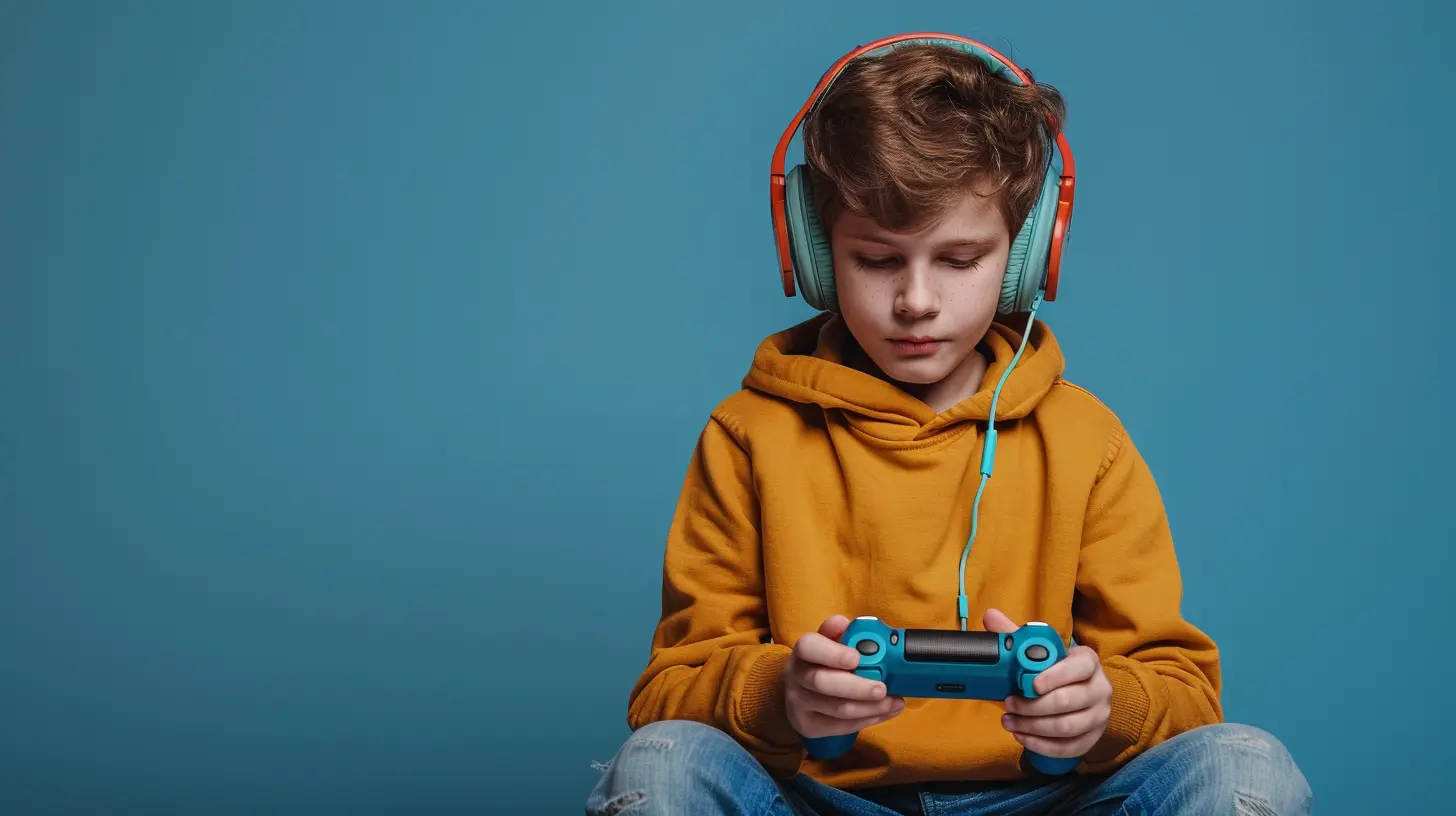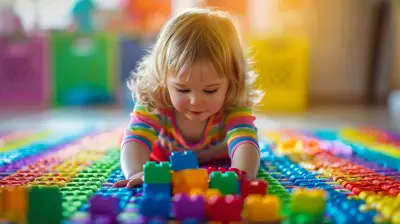27 July 2025
Let’s be honest—traditional teaching methods can feel like watching paint dry. Chalk and talk don’t always cut it anymore, and students today? Their attention spans are fighting for survival against an onslaught of YouTube, TikTok, and mobile games. That’s why smart educators are turning to something that actually works and makes learning fun: games and simulations.
But here's the kicker—it’s not just about adding “fun” for the sake of it. When used properly, these tools ignite curiosity, boost engagement, and deepen understanding like nothing else. So, if you're tired of blank stares and want your students to truly get the material, you're in the right place.
Let’s break it down.
Why Games and Simulations Work in the Classroom
Think back to the last time you played a game. Did you zone out or were you all in? Games activate the part of the brain that’s all about problem-solving, reward, and motivation. Now imagine combining that with your lesson plan—boom! You’ve just turned your class into a curiosity-powered engine.Games and simulations bring in:
- Active participation – Students aren't passive; they're involved.
- Immediate feedback – You know instantly if something's not clicking.
- Safe failure – They can mess up without real-world consequences.
- Collaboration – Many games require teamwork and strategy.
This isn’t fluff. It’s cognitive science in action.
Games vs. Simulations: What’s the Difference?
Before we dive into how to use them, let’s quickly clear up the confusion. People often throw around “games” and “simulations” like they’re twins, but they’re more like cousins.Games:
These are driven by rules, goals, and competition. Think Jeopardy-like classroom quizzes, Kahoots, card games, or even storytelling board games. They’re meant to be engaging, fun, and often reward-based.Simulations:
These mimic real-life scenarios where students can test theories, make decisions, and see outcomes in a controlled environment. Think virtual labs, business scenario simulators, role-playing historical events, or building ecosystems.Both are powerful. The choice depends on your learning goals.
The Science Behind the Magic
We’re not just making this up to jazz up your lessons. There’s legitimate research that supports the use of games and simulations in education. Neuroscience says that when students are emotionally invested (like they are in a game), they retain way more information.Retaining information through experiential learning—which is basically learning by doing—is far more effective than passive learning. In fact, according to Edgar Dale's Cone of Experience, people remember 90% of what they do, compared to just 10% of what they read.
Games and simulations are like jet fuel for experiential learning.
Choosing the Right Game or Simulation for Your Lesson Plan
Let’s face it: not every game or simulation will magically fit your curriculum. You can’t just throw in Monopoly during a chemistry lesson and hope it resonates.Here’s how to pick the right one:
1. Define Your Learning Objective
Ask yourself, “What should my students know or be able to do after this?” If your goal is to teach financial literacy, then a budgeting simulation makes sense. Teaching biology? Maybe a virtual frog dissection or ecosystem builder.2. Match the Game Type to the Content
- Quizzes/Trivia – Quick reviews (Kahoot, Quizizz)- Strategy Games – Decision-making and planning (Settlers of Catan for resource management)
- Role-Playing Simulations – History, literature, or debate (Model UN, mock trials)
- Sandbox Simulators – Science, engineering, geography (Minecraft Education Edition, SimCity)
3. Consider Student Abilities and Access
Do your students have the tech to run a simulation? Are they familiar with the platform? Do you have students with special needs who need accommodations? Plan accordingly.How to Integrate Games and Simulations into Your Lessons
You’ve got your game or simulation. Now what? It’s all about implementing it smoothly so it aligns with your curriculum and doesn't feel like an awkward detour.Step 1: Set the Stage
Introduce the game or simulation with context. Let students know why they’re doing it and what they should get out of it. This is where you sell the “why” behind the “what.”Example: “Today, you’re not just students—you’re city planners. Your job is to create a sustainable city using limited resources in SimCity.”
Step 2: Incorporate It Into the Learning Cycle
Use the game/simulation as a hook, learning activity, or even assessment tool. Just avoid making it a one-time thing. Tie it into your lesson objectives directly.Step 3: Debrief and Reflect
This is where the real magic happens. After the game or simulation, have your students reflect. Ask:- What did you learn?
- What mistakes did you make?
- How would you do it differently next time?
This reflection cements the learning and connects it back to the real world.
Real Examples You Can Borrow Right Now
Let’s put theory into action with classroom-tested ideas.Math:
- Game: “24” game using cards to teach operations and order of operations.- Simulation: Online budget simulators to teach financial math and planning.
Science:
- Game: Genetics card games to teach dominant and recessive traits.- Simulation: Virtual lab dissections or simulations like PhET for physics and chemistry concepts.
History:
- Game: Oregon Trail to explore westward expansion.- Simulation: Role-play debates during the Constitutional Convention.
Language Arts:
- Game: Story creation dice or word card games to support creative writing.- Simulation: Interactive storytelling platforms like Twine where students create branching narratives based on literary themes.
Tips to Maximize Impact
You’ve got the idea—now let’s make it unforgettable.1. Keep It Relevant
Always tie the game back to your learning target. Don’t let it become a distraction.2. Assess for Understanding
Use quick check-ins, reflective journals, or exit tickets to see what they really learned.3. Balance Competition
Games are fun, but over-competitive environments can stress students out. Keep it light and inclusive.4. Pair with Group Work
Many games and simulations naturally lend themselves to collaboration—capitalize on that. Let students negotiate, compromise, and plan together.5. Be Flexible
Sometimes, things won’t go exactly as planned. Tech hiccups, confused students, or even the game flopping—it happens! Just pivot and use it as a learning moment.The Hidden Bonus: Soft Skill Development
While your prime goal is teaching subject matter, let’s not ignore the goldmine of soft skills games and simulations encourage:- Communication – Explaining strategies, justifying decisions
- Collaboration – Teamwork in group-based games
- Critical Thinking – Solving multi-layered problems
- Adaptability – Navigating unexpected game outcomes
These are 21st-century must-haves. Your students may not remember your PowerPoint on photosynthesis, but they’ll remember how they saved their virtual ecosystem.
Wrapping Up: Make Learning an Adventure
Here’s the bottom line: Games and simulations aren’t just gimmicks. Used intentionally, they’re powerful educational tools that transform passive listeners into active learners.When your students are laughing, problem-solving, and participating like never before, you’ll wonder why you didn’t jump on this bandwagon sooner.
So go ahead—turn your classroom into a game board, a battlefield of ideas, or even a lab in a virtual world. Your students will thank you (maybe not out loud, but trust us—they will).
Bonus: Starter Tools to Get You Going
Here are some popular platforms and tools educators swear by:- Kahoot & Quizizz – Gamified quizzes for any subject
- Blooket – Combines learning with game-show vibes
- PhET Interactive Simulations – Science and math simulations
- Minecraft EDU – Build history, science, and even language arts lessons
- Classcraft – Gamify classroom behavior and learning
- Twine – Create interactive fiction and storytelling adventures
Pick one. Try it. See the difference.








Aleta Hardy
What a fantastic topic! Incorporating games and simulations into lesson plans is a brilliant way to boost engagement and deepen understanding. Can't wait to see how teachers embrace these fun strategies! 🎉
November 25, 2025 at 3:24 AM